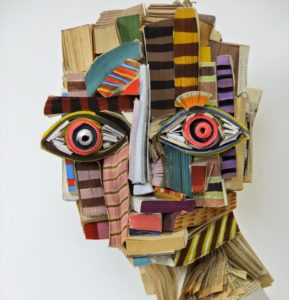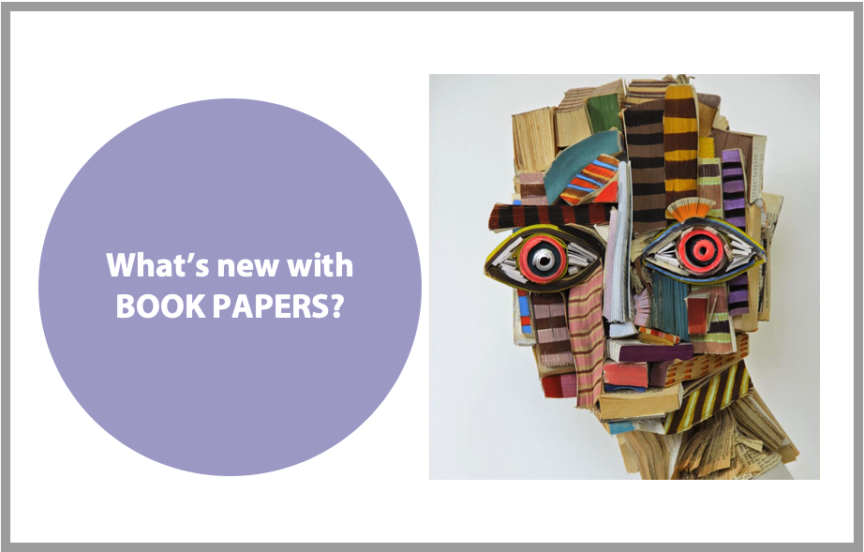Trends in Book Papers
Papers manufactured for today’s book market have expanded past traditional white and cream offset grades. From coloring books, puzzle books, mass market paperbacks and trade books to educational workbooks and hardcover books, papers are now available in a wider variety of finishes, calipers, basis weights and brightness. Paper mills today are offering more than a wider range of inkjet compatible papers for book printing. They have expanded into papers which are print enhancing as well as environmentally smart. Let’s look at some of the key attributes of book papers and some new offers that have come on the market.

Smooth Operators
Book papers require a smooth surface to keep the printing of text and photos very sharp. The process of calendaring a paper changes its surface by applying high speed pressure rollers to “slick up” the paper surface. When extra calendaring is applied, the effect may look like a coated stock to the naked eye, but when you look closely the fiber pattern within the sheet will be visible. This process compresses the paper fibers more than the normal paper making process, which lessens the porosity of the sheet. Lower porosity slows the migration of the ink, but it doesn’t limit the carrier migration as much as a true coated sheet. Depending on the calendaring process, the surface will have a matte, silk, or a glossy finish.
Calendaring can be applied to both uncoated and inkjet treated papers. A calendared offset or inkjet treated book grade can provide more color fidelity and text clarity than a standard uncoated grade.
Smooth Offset
Smooth offset is exactly that, an uncoated and untreated grade which is smoother than traditional offset. Commonly used for books printed using offset lithography, this grade is an option for inkjet systems if the ink is formulated using lower water content and higher glycol additives. Since higher glycol inks do not rely on treated paper chemistry, for black and white or lower color quality requirements, this grade can provide a low-cost alternative and smoother surface reducing the visual effects of print mottle than standard offset grades.
Highly Calendared Treated
When printing full color, you will see a difference in color fidelity and ink laydown between standard treated versus treated highly calendared stock. And for one mill, introducing a new highly calendared treated media was the way to go. Early 2020, Evergreen Paper introduced their product to the book market. TruSpec book grade which uses HP ColorPro chemistry is offered in 45, 50 and 60 basis weights, 85 brightness at PPI ranges of 800 (45#), 715 (50#) and 540 (60#). This paper has shown improved production speeds (coverage dependent) keeping required lay flat properties reducing finishing and inserter jams.
Coated Inkjet
Film coated stocks have a coating that is added during the paper making process, and unlike the highly calendared grades, the coating is what provides the matte, silk, or gloss finish. This coating also limits the absorption of the ink into the paper so the ink lays on top of the coating. Since the clay coating is on top of the paper fibers, ink thickness and drying must be balanced, to assure text and photos will not lose definition
Verso expanded their Trujet book grade in 2020 by adding a 50# Matte. Now offering 45 and 50 basis weights, the Trujet is 86 bright matte coated surface offering 738 (50) and 800 (45) PPI ranges.

Paper with a Heart
You may not know that most paper mills strive to promote responsible forestry, practices. Although paper and paper mills take a lot of heat from paperless advocates, there are programs are put in place to meet to make paper a very sustainable channel including Sustainable Forestry Initiatives, Fiber Sourcing standards and Chain-of-custody certifications, among others.

Paper mills are also continuing to find new ways to recycle and reuse paper products by offering recycled content within their inkjet paper portfolio. Pixelle Specialty Solutions offers both treated highly calendared and a film coated options for their Reserve and Specialty line of silk book papers. Both lines offer Post-Consumer Waste (PCW) options available upon request giving book printers environmental options to their customers. Pixelle’s treated silk is offered in 7 basis weights ranging from 15 to 62 at 92-96 brightness. Film coated is offered in 24, 28, 49 basis weight at 96 bright.
For inkjet book printers, short run self-publishing is becoming a hot trend which requires options. From paper type, shade, grammage, brightness, finish, PPI and recycle content, finding the right paper can be stressful if you do not know where to look.

